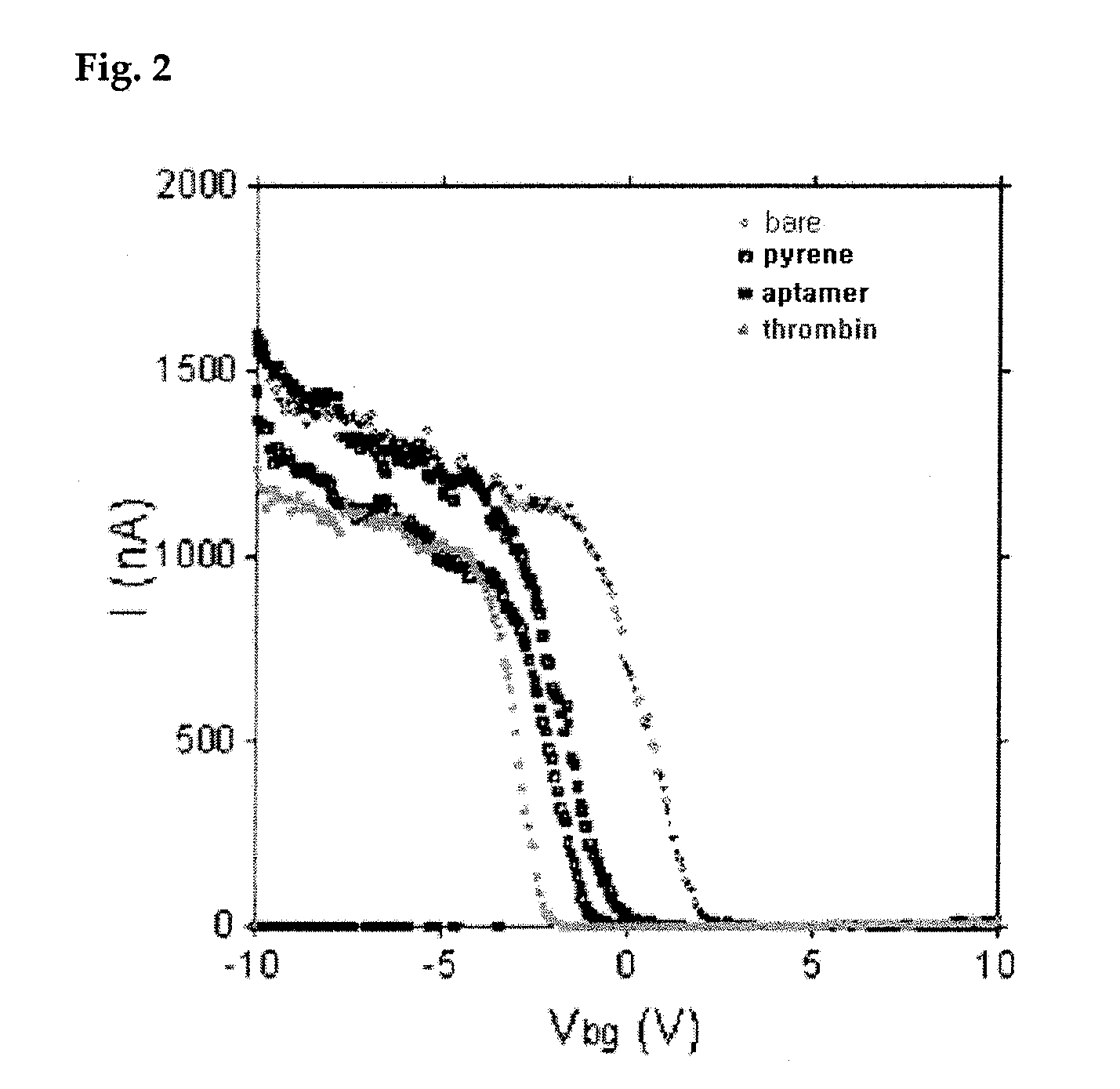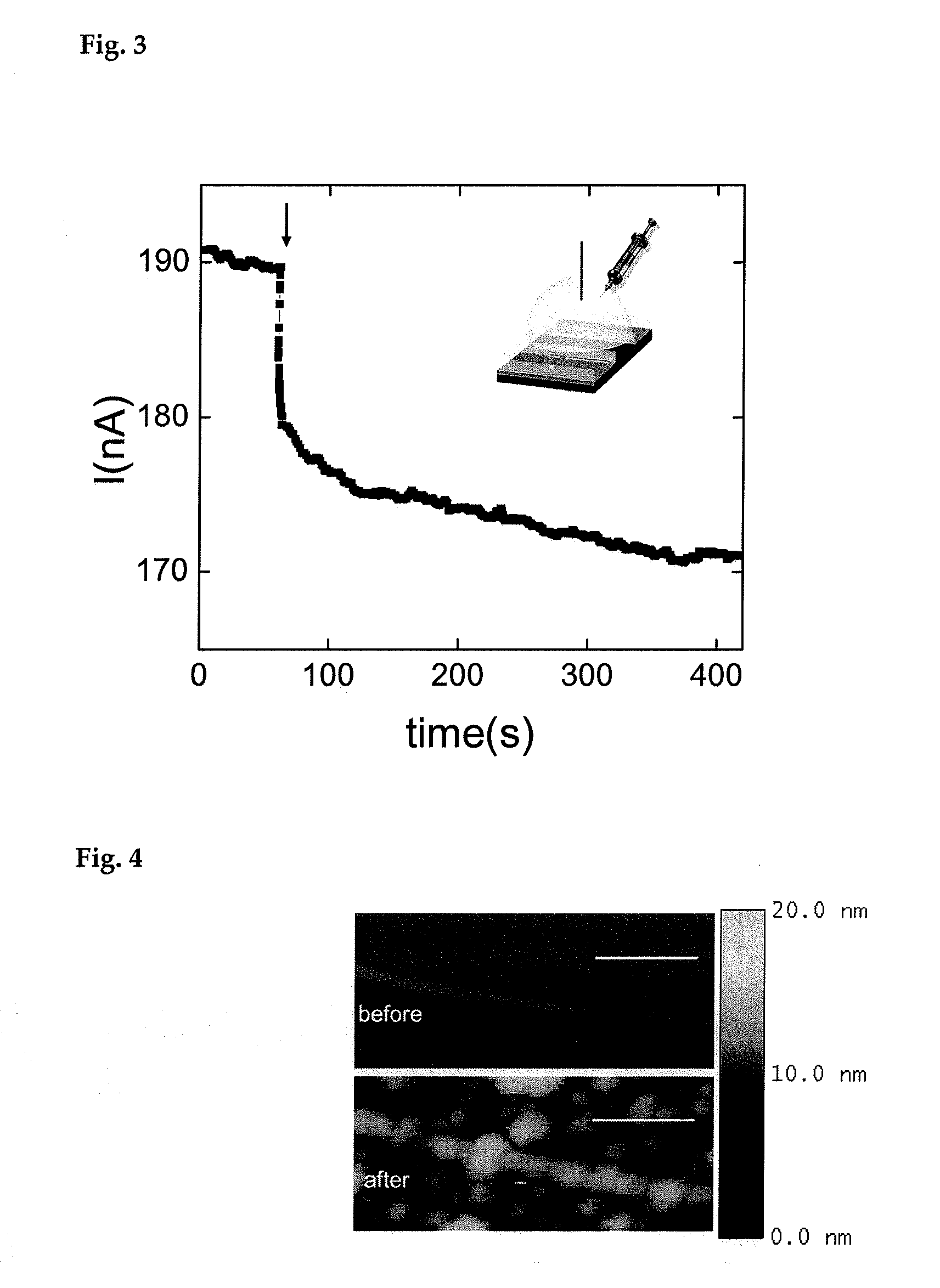Carbon nanotube biosensors with aptamers as molecular recognition elements and method for sensing target material using the same
- Summary
- Abstract
- Description
- Claims
- Application Information
AI Technical Summary
Benefits of technology
Problems solved by technology
Method used
Image
Examples
examples practical
and presently preferred embodiments of the present invention are illustrated as shown in the following Examples.
[0049] However, it will be appreciated that those skilled in the art, on consideration of this disclosure, may make modifications and improvements within the
[0050] In order to recognize a specific molecule, the aptamers binding specifically to the molecule were adsorbed on the surface of carbon nanotube constituting the channel domain of a carbon nanotube transistor with linker. In practice, 1-pyrenebutyric acid N-hydroxysuccinimide ester was utilized to fix immobilize the aptamers on the carbon nanotube and then to modify the surface.
[0051] In detail, one end of 1-pyrenebutyric acid N-hydroxysuccinimide ester was adsorbed on the carbon nanotube while the other end of 1-pyrenebutyric acid N-hydroxysuccinimide ester was reacted with the aptamer to fix immobilize the aptamers on the carbon nanotube.
[0052] Then, thrombin, a protease participating in blood coagulation was r...
PUM
| Property | Measurement | Unit |
|---|---|---|
| Diameter | aaaaa | aaaaa |
| Diameter | aaaaa | aaaaa |
| Hydrophobicity | aaaaa | aaaaa |
Abstract
Description
Claims
Application Information
 Login to View More
Login to View More - Generate Ideas
- Intellectual Property
- Life Sciences
- Materials
- Tech Scout
- Unparalleled Data Quality
- Higher Quality Content
- 60% Fewer Hallucinations
Browse by: Latest US Patents, China's latest patents, Technical Efficacy Thesaurus, Application Domain, Technology Topic, Popular Technical Reports.
© 2025 PatSnap. All rights reserved.Legal|Privacy policy|Modern Slavery Act Transparency Statement|Sitemap|About US| Contact US: help@patsnap.com



